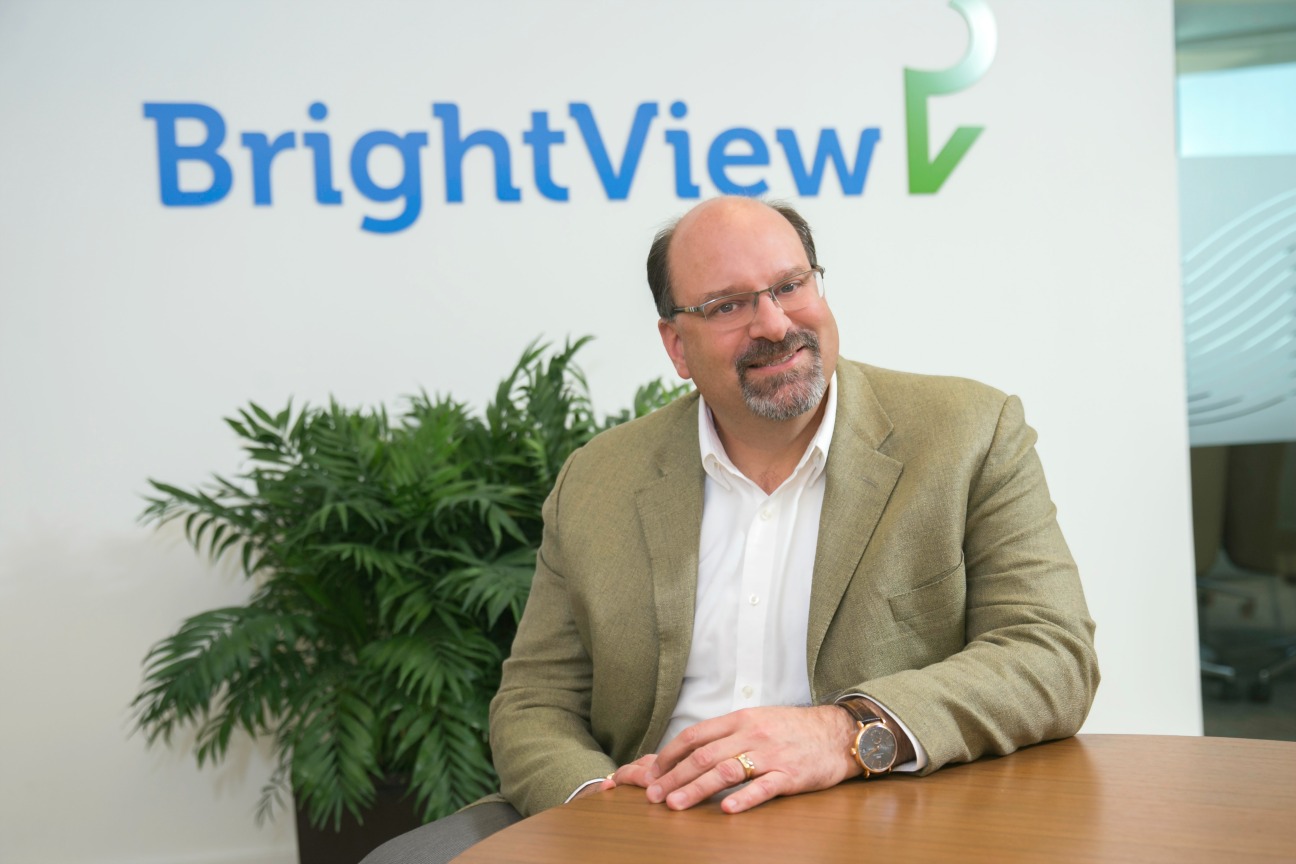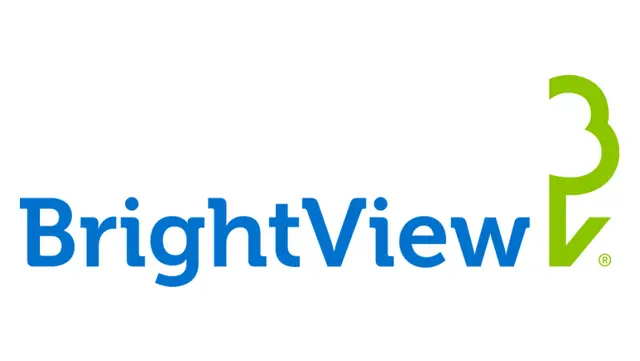An Interview with BrightView's Andrew Masterman
The National Association of Landscape Professionals sat down with BrightView's CEO

When two of the nation’s largest landscape companies, Brickman and ValleyCrest, announced in 2014 that they would merge, it was big news in the landscape industry. Both venerable companies with long histories, Brickman was founded in 1939 and Valley Crest in 1949. At the time of the merger, the two firms had more than 20,000 employees and $2 billion in revenue, and ValleyCrest was on Forbes list of the top-500 privately held companies.
The new company rebranded as BrightView, and Andrew Masterman took the helm as president and CEO in November 2016, following in the footsteps of the first CEO Andrew Kerin and interim CEO Pat Velasco. Mergers are never an easy process, so we talked with Masterman to see how things are going three years after the merger was announced.
YOU RECENTLY JOINED BRIGHTVIEW AS CEO. WHAT ATTRACTED YOU TO THE JOB?
There is a great deal about BrightView that appealed to me. I knew I would be joining a team made up of some of landscaping’s most skilled and committed professionals. I knew the company was the industry leader and that it does great work across multiple service lines—design, development, maintenance, golf, tree care and sports turf. The breadth of BrightView’s operations was also very appealing to me.
WHAT MAKES THE LANDSCAPE INDUSTRY DIFFERENT OR UNIQUE VERSUS OTHER INDUSTRIES YOU HAVE WORKED IN?
It is a fascinating and complex business. Something that I find gratifying is the relationship between us and our clients and how that partnership can help deliver value to the customers. If you look at one of our client categories, healthcare, you can see how important landscapes are to delivering value and helping achieve good patient outcomes. We help these facilities design, build and maintain landscapes that create a safe environment that can aid in the healing process. That’s a dimension to this business that I hadn’t really thought about before coming to work here. It is certainly gratifying to know that you’re not only helping your clients succeed, but you’re helping people in the process.
BRIGHTVIEW HAS BEEN THROUGH A LONG MERGER AND TRANSITION PERIOD. HOW IS THE COMPANY DOING NOW? ARE THERE LESSONS LEARNED ABOUT MERGING TWO LARGE COMPANIES?
The company is doing very well, and so much of the credit goes to BrightView crews, the men and women who deliver on our brand promise every day in every branch. As we move forward as BrightView, it’s important that we continue to embrace the values that created success for Brickman and ValleyCrest and that we never forget that despite our size and national presence we are a local company. In terms of the merger and transition, while there is still work to do, we have made real progress in bringing the legacy companies together and moving forward together as BrightView. We’re through much of the initial challenges of the merger, but I try to focus on the positive qualities that were common to both Brickman and ValleyCrest: a passion for the craft of landscaping and a commitment to serving clients.
WHAT CHALLENGES HAS BRIGHTVIEW FACED RELATED TO THE MERGER?
Merging any two organizations will bring cultural challenges, though we’re largely through that process now. Everyone who is with us now is committed to what we want to achieve as BrightView. Delivering quality and value to our clients and creating a safe and rewarding workplace for our teams are really the only things that matter. We had the privilege of learning from both Brickman and ValleyCrest and making BrightView reflect the positive qualities of both. I have a good sense of some of the day-to-day challenges we’ve faced merging the companies, but thankfully most of that work was already done when I arrived.
IN ANY MERGER, YOU WILL LOSE LONG-TERM EMPLOYEES. HAS THAT BEEN A CHALLENGE, AND HOW HAVE YOU HANDLED IT?
That is an unfortunate consequence of any merger. Skilled, dedicated people have such a long-standing and emotional connection to the company they’ve spent years—sometimes decades—working for, and a merger is a difficult thing. Since the merger, some employees have moved on or chosen to change careers. That is natural in any period of change. However, I can confidently say that one of the best surprises in my joining BrightView was the depth of leadership in the organization.
We are working now to create an entrepreneurial environment at the branch level, but within the context and strength of a national organization. But whether you’re maintaining a golf course in Florida or building a corporate campus in Southern California, we’re all committed to BrightView and to serving our customers. There are literally hundreds of account managers, branch managers and business developers and thousands of crewmembers with more than 10 years with the company, many with more than 20. We just celebrated several employees at one branch with more than 40 years experience with the company. That kind of depth is a testament to the commitment our employees have to their work and their customers.
HOW DO YOU FEEL ABOUT THE POTENTIAL FOR THE LANDSCAPE INDUSTRY? OPPORTUNITIES? CHALLENGES?
I’m very excited about the prospects for our industry. Since coming here late last year, I have toured hundreds of BrightView work sites and branches across all of our service lines. It is inspiring to see the kind of first impression (and lasting impression) that a well-designed, professionally installed and maintained landscape can make. I mentioned healthcare earlier, but in other environments—universities, parks, corporate campuses and even sports venues—the impact can be just as significant.
In terms of challenges, staffing probably tops the list. At the crew level, landscaping is demanding and difficult work. It’s not for everyone, but we have team members who have been with us for decades, and we have multi-generation BrightView families. Once someone joins BrightView, our job is to create an environment that is rewarding and safe and offers opportunity for career growth.
WHAT IS THE VISION FOR THE FUTURE OF BRIGHTVIEW? LONG-TERM, SHORT-TERM GOALS THAT YOU WANT TO SHARE?
Our long-term strategy is built on organic growth within our branches-winning new business and expanding our relationship with existing clients. As you saw with the Marina purchase in January, we're also looking to grow through acquisition. While there are a tremendous number of potential acquisition targets in this business, we have to be disciplined. If we bring a company into the BrightView family, we have to be assured that it's a good fit for us both strategically and culturally. Marina clearly was.
In addition, the scope of what we do allows our employees to truly build careers. I have met dozens of BrightView team members who started on a crew and now are production managers, account managers, branch managers and company vice presidents. Even when team members face circumstances that require them to move, we can often support that decision and find a way to stay with BrightView as they move across a city, within a state or even to other states.
WHAT MAKES BRIGHTVIEW DIFFERENT FROM OTHER LANDSCAPE COMPANIES?
Every BrightView team member I speak with shares a passion for creating beautiful and inspiring landscapes. Not only do we have team members who have been with us for 30 years or more, we have multi-generation BrightView families. That institutional knowledge, experience, passion and loyalty is one of our great strengths.
I mentioned earlier that we are a local company with a national presence, which allows us to focus resources and expertise wherever our clients may need it. As you saw with Hurricane Matthew and Winter Storm Stella, events that have potentially catastrophic impacts for our clients, we are able to focus resources not just from multiple branches, but from multiple lines of business. There aren’t many companies in commercial landscaping that marshal resources like we can.
Scale also allows us to benefit from shared best practices and purchasing economy. At BrightView, we are institutionalizing quality through an Operational Excellence Center. OpX has been charged with creating one BrightView way in safety, quality management, client service, production planning, irrigation management, training and technical services. OpX allows us to take decades of institutional knowledge and accumulated skill and passion from our teams and make it the central pillar of the BrightView brand.
Click here to view the full issue of The Landscape Professional.
For more information and/or permission to use BrightView images and assets, please send all media inquiries to [email protected]




